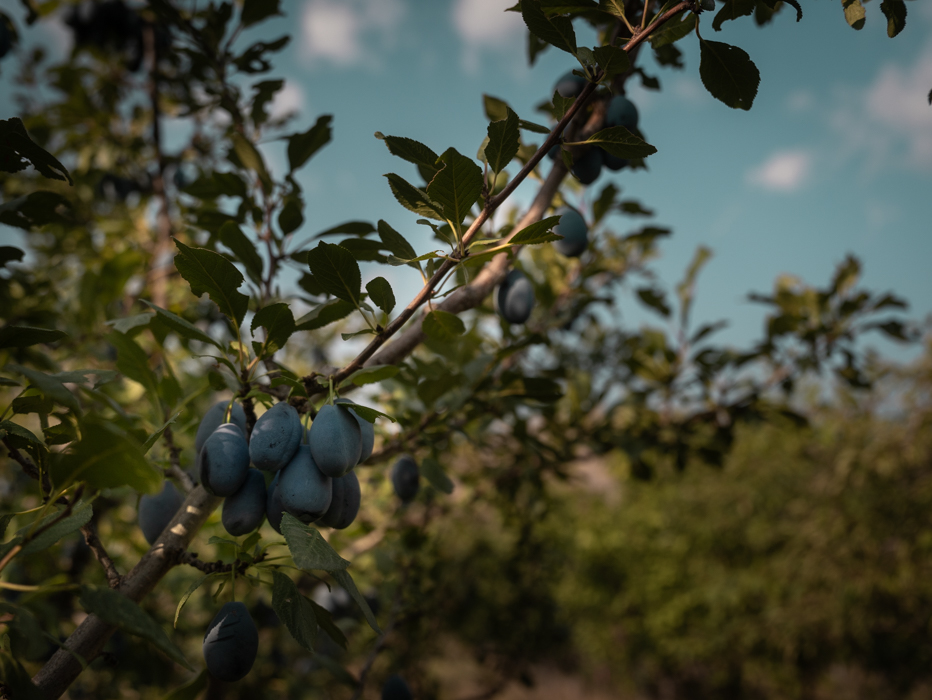Perennials, trees, shrubs and other plants that grow back year after year, have more developed root systems than annual plants. This enables them to sequester more carbon, store more water, and sustain complex soil microbial communities throughout the seasons. Agroforestry involves integrating fruit and nut trees or trees for timber into agricultural systems and includes practices like windbreaks, alley cropping, and silvopasture.
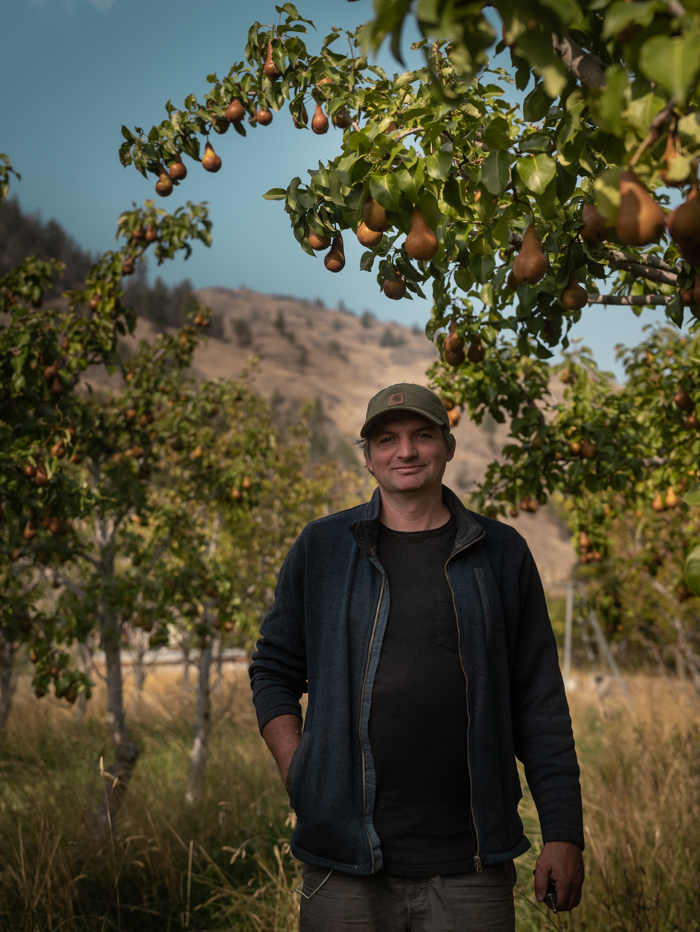
Nestled in the beautiful Similkameen Valley of British Columbia, Snowy Mountain Farm is a 25-acre organic family farm run by Aaron and Carly Godard. The farm’s poetic surroundings provide the backdrop for multiple enterprises and an abundance of life, from bountiful orchards and vineyards to outdoor tourism destinations bustling with wildlife.
During the Stories of Regeneration tour in 2023, Regeneration Canada visited Aaron and Carly on their farm. The family was generous with their time and openness, while the landscape gifted the team with breathtaking beauty and a display of the northern lights.
Aaron’s culinary background and curiosity for complex flavour profiles served as the inspiration to purchase Snowy Mountain Farm in 2019. Aaron and Carly’s dedication to operating their farm regeneratively is paramount, as exhibited through the countless hours, energy, and finances invested. The pair is undoubtedly passionate about what they do.
An integral aspect of regenerative agriculture emphasized by the Godards is maintaining actively growing plant roots throughout as much of the year as possible and integrating trees and shrubs in the agricultural landscape. Together, these practices confer numerous ecosystem services and are essential for sustaining and regenerating soil biological processes, as well as leading to economic and environmental benefits.
Benefits of Maintaining Continuous Living Roots:
● Soil biology: Living plant roots excrete root exudates, which are organic carbon compounds often high in sugars. These sugars act as a quick and easy energy source for below-ground soil life, enabling plants to attract specific microbes to their rhizospheres and engage in symbiotic partnerships. These organisms transform nutrients into plant-available forms in return.

The rhizosphere, the immediate space around plant roots, is a bustling hub of biological and chemical activity driven by root secretions and soil microbial interactions. This self-generating fertility cycle, as eloquently described by Daniel Mays in his book, “The No-till Organic Vegetable Farm,” underscores the significance of living plants as natural contributors to soil health.
“Living plants are the most natural way to nourish soil biology and generate soil health. Unlike soil amendments and imported organic matter, plants are living solar collectors customized to the conditions and needs of the soil. They pump the sun’s energy and the air’s carbon deep underground, feeding soil life in exchange for nutrients in a self-enriching cycle of symbiosis — all with minimal human intervention. This model of self-generating fertility is the renewable source of terrestrial wealth, and we all become poorer when we fail to maximize photosynthesis on the farm.”
— Daniel Mays, The No-till Organic Vegetable Farm

● Soil carbon: As plants take in CO2 from the atmosphere, carbon is stored in their roots. As the roots of annual plants decompose slowly over winter, microbes consume and transform the energy stored in the roots, enriching the soil. Living plant roots and their exudates improve soil nutrient availability and uptake and increase organic carbon levels in the soil.
● Weed suppression: Living roots suppress weed growth by outcompeting weed seedlings for resources like water, nutrients, and space.
● Reduced nutrient loss: Living roots take up mobile nutrients, like nitrogen, and hold them in plant tissues before they can leach downward out of the root zone.
● Improved soil structure & erosion control: Bare soil is vulnerable to erosion, especially under heavy rain or snowfall. Living roots anchor the soil in place, reducing this risk. Even when dormant, roots maintain channels for air and water to infiltrate into the soil profile rather than running off the surface, preventing compaction and promoting drainage. This well-aerated soil creates a welcoming environment for beneficial microbes and allows roots to breathe and thrive.
The Godard family understands this well. In rugged landscapes like the Similkameen Valley, characterized by strong winds and prone to mountain slides, floods and wildfires, protecting the soil is key. In spring 2023, a harsh drought, sudden heavy rain, and rapid snow melt from the mountains led to crop loss and a landslide on their farm. Water poured into the canyon that ran by the creek near their property, damaging the main irrigation line at the critical blossoming stage. If the farmers hadn’t nurtured living roots to anchor their soil, the situation would have been considerably more difficult to manage.
By understanding and embracing the importance of maintaining continuous living roots, we contribute to the overall resilience of our landscapes, making them more resistant to unpredictable challenges.
Agroforestry Benefits:
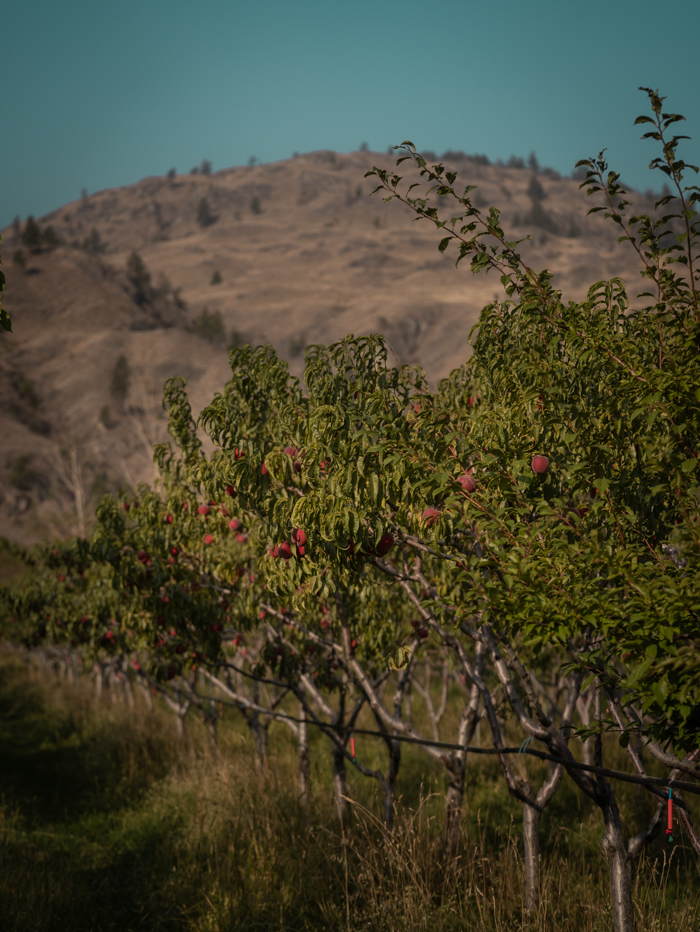
Agroforestry refers to the inclusion of trees in agricultural systems, whether that be within pastures (silvopasture), between crop rows (alley cropping), or in forest farming. While many benefits associated with living roots are also associated with the inclusion of trees, there are some additional advantages related more specifically to agroforestry:
● Wildlife habitat: While more typical crop plants provide habitat for smaller forms of wildlife, like insects and rodents, treed ecosystems provide refuge for birds and larger mammals.
● Diversified revenue streams and job generation: Including trees in agroecosystems drives job creation, such as seasonal fruit pickers. Additionally, the production and sale of tree products like timber, tree fruit, nuts, fibre, or bioenergy, diversifies farmers’ revenue streams and helps manage financial risk.
● Living fences: Trees can act as living fences that provide shade for livestock, control snow drift, and capture snow, which offers precious moisture when it melts in the spring. Trees can also act as barriers against pesticide drift from surrounding farms, and limit odour drift on livestock operations or at manure spread time, helping to maintain positive relationships with neighbours.
How Do You Maximize Living Roots?
Here are some additional practices that farmers might use to achieve these benefits associated with living roots and trees in the agroecosystem:
● Perennial plantings: Perennial crops like fruit trees and grapevines are ideal for persistent roots. Their expansive root systems penetrate deep into the subsoil, sequestering more carbon than annual crops. Additionally, perennial plants have longer growing seasons compared to annual plants, which prolongs the time that active living roots are in the soil, extending the time that soil microbes have access to nourishing sugars.
Of Aaron and Carly’s 25 acres of land, they dedicate 4 acres to grapevines, 12 acres to orchard fruit, including 70+ varieties of cherries, apricots, peaches, plums, pears, apples, and quince, while the remaining land is used for tree buffers and wild land.
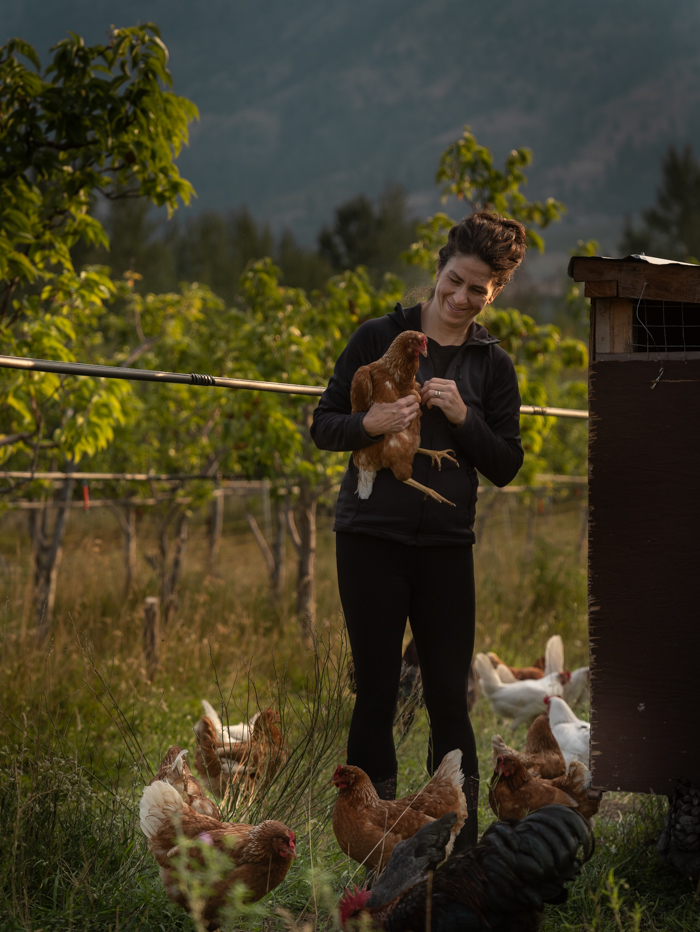
● Cover cropping: Cover cropping increases the quantity and diversity of living plant roots in the soil, thus increasing the quantity and diversity of carbohydrates available to feed soil microbes.
At Snowy Mountain, the Godards interplant cover crops like buckwheat under the trees, along with a vast array of perennials. These plants put down roots at varying depths, promoting biodiversity underground. Some varieties include comfrey, which accesses nutrients like calcium and potassium; chicory to accumulate zinc and aerate the soil; angelica to deter parasites and pests; and legumes as nitrogen-fixers, among others.
● Minimal soil disturbance: Reducing soil disturbance preserves root integrity and soil structure, fostering a favourable environment for root growth. This practice also maintains the microbial community, aiding in organic matter breakdown and nutrient availability while ensuring optimal water infiltration and retention for plant roots.
● Managed grazing: Proper grazing practices stimulate root growth and contribute to soil fertility.
At Snowy Mountain, the Godards have a flock of pasture-raised chickens and Guinea fowl, and future plans to incorporate sheep into the system.
● Leaving annual plants in the fall: Rather than pulling spent annual crops out by the roots, we can leave roots intact and chop plants to ground level. Some stocks can even be left to serve as pollinator habitat during the winter. This is especially important at the end of the growing season, when winter may tempt some to clear the garden or field of annual crops. Even at the end of their life, plants do not need to be uprooted entirely (as long as they’ve been healthy). This retention of roots, even during the colder months, plays a pivotal role in sustaining a healthy and resilient ecosystem.
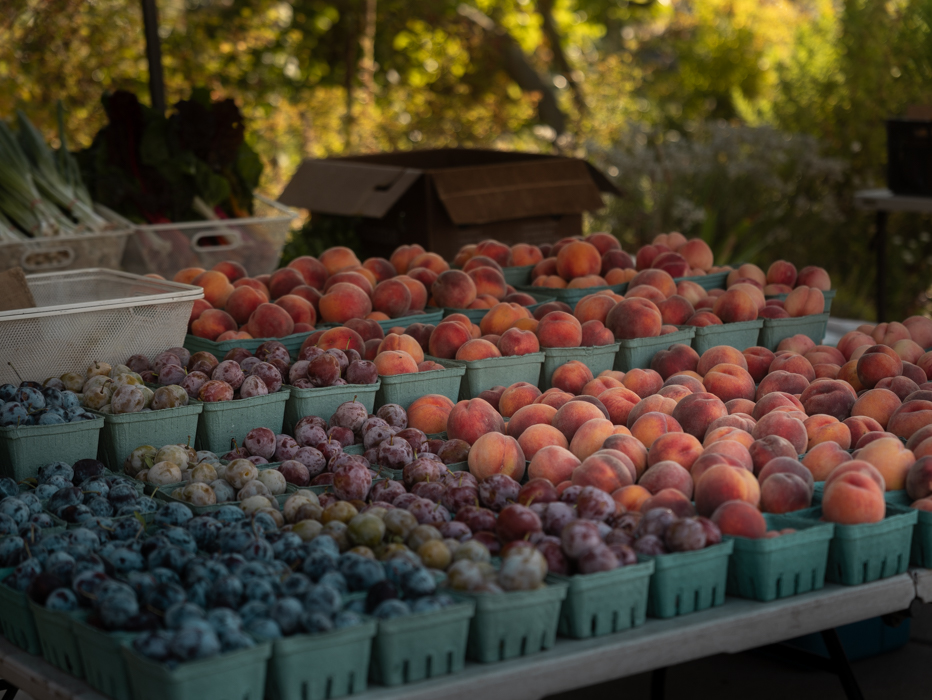
Maintaining living roots and implementing trees bring vitality and profit to farms and gardens. These practices actively nourish the abundance of life below our feet, further contributing to the enhanced biodiversity of regeneratively-managed lands. At Snowy Mountain Farm, Aaron and Carly exhibit impressive dedication to regenerating their land by prioritizing living roots in the ground year-round through growing perennials and cover cropping. They are aware of the challenges of farming this way, environmentally and ethically at a small scale, but are committed to leaving the land better than they found it. As the Godards experienced firsthand in spring 2023, living roots stabilize landscapes prone to disasters like droughts, floods and slides.
As we go out into the world, let’s all be more mindful of the interconnectedness of our natural world, and specifically, the ways in which our beautiful trees, flowers, and crops interact with the soil life. When garden planning, consider adding a fruit tree, berry bush or cover crop this season – a small step towards regeneration that, collectively, will ripple across landscapes.
To know more about regenerative practices at Snowy Mountain Farm, watch the short film interview and the “Regenerating Ourselves” webinar recording with Aaron and Carly Godard, and listen to the podcast episode with Aaron.
Join the regenerative agriculture movement! Stay updated with our Principles of Regenerative Land Management blog series by subscribing to our newsletter and following our social media channels. We are delighted to have you on this journey with us!
If you have any questions or comments about the topics covered in this blog post, please contact our Education & Research Manager at: paige@regenerationcanada.org. If you have questions specific to the Stories of Regeneration campaign, please connect with our Campaign Manager at: alieska@regenerationcanada.org.

